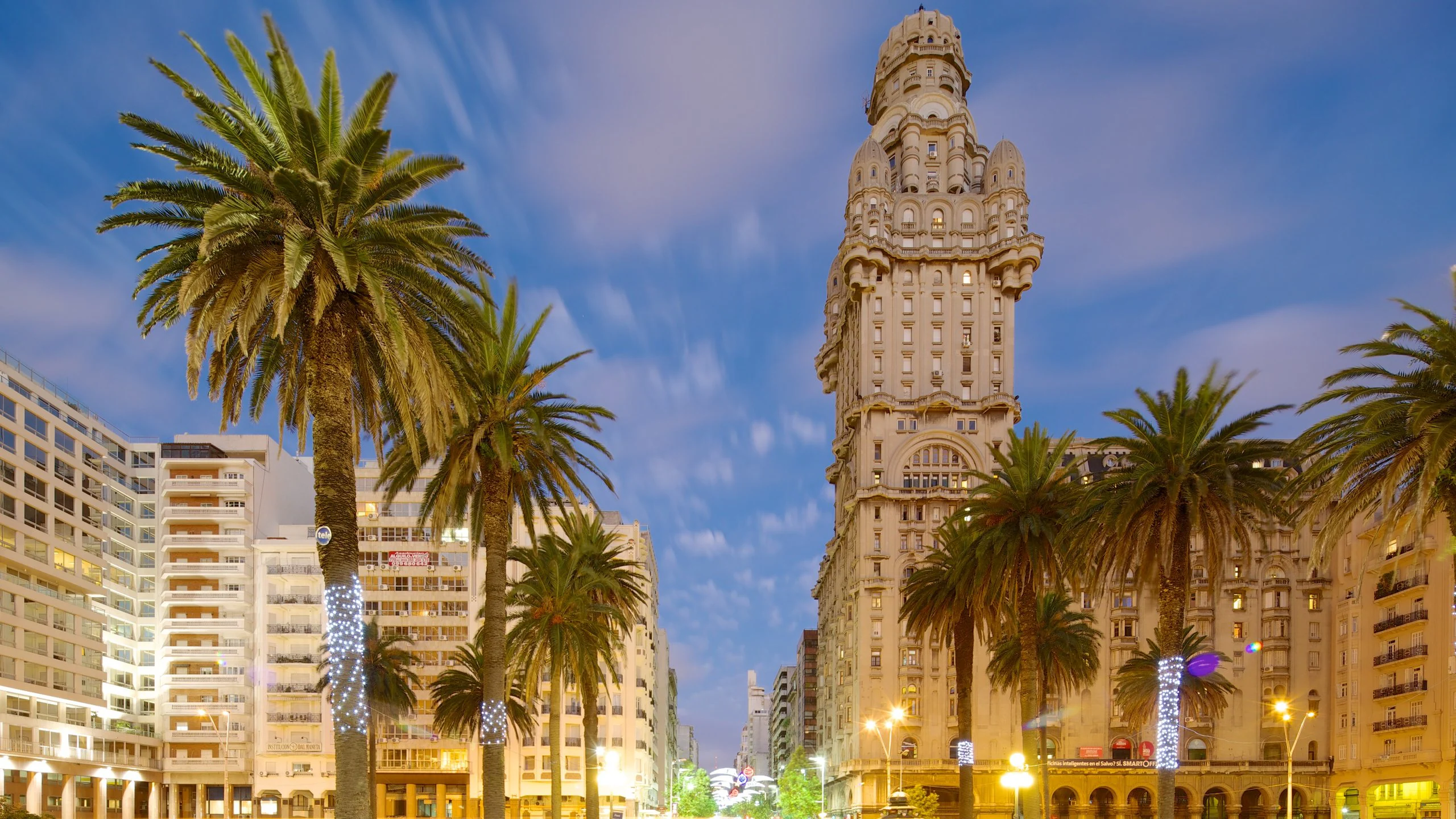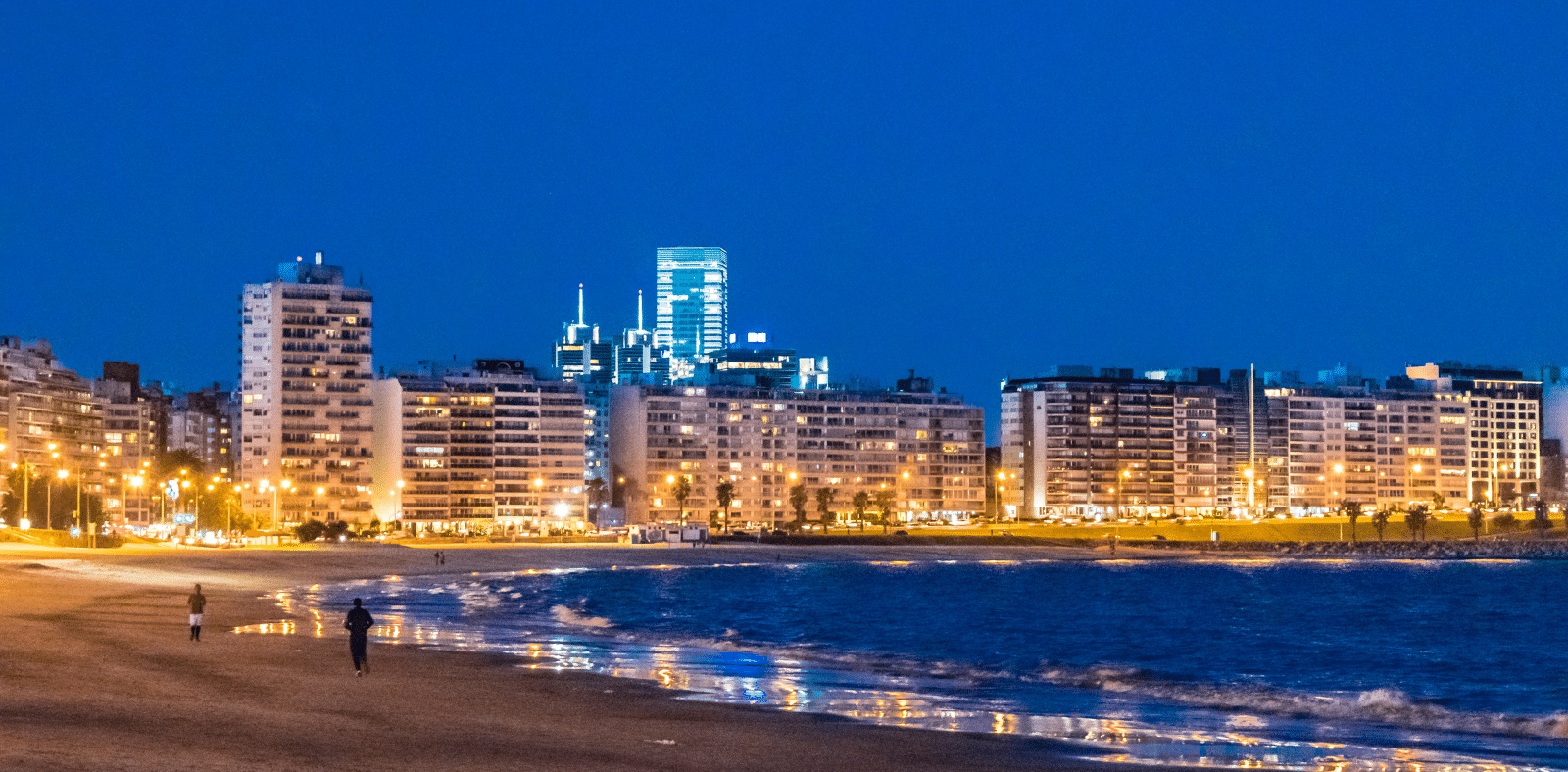



Montevideo, Uruguay’s capital, is a major city along Montevideo Bay. It revolves around the Plaza de la Independencia, once home to a Spanish citadel. This plaza leads to Ciudad Vieja (the old town), with art deco buildings, colonial homes and landmarks including the towering Palacio Salvo and neoclassical performance hall Solís Theatre. Mercado del Puerto is an old port market filled with many steakhouses. ― Google
Summer (December–March) – Warm and sunny, perfect for beaches and festivals.
Spring (October–November) – Mild weather, blooming parks, fewer tourists.
Fall (April–May) – Cool and quiet, great for museums and local experiences.
Winter (June–August) – Chilly but rarely extreme; expect overcast skies and cultural events.
By air:
Fly into Carrasco International Airport (MVD) — ~30 minutes from downtown.
By ferry & bus:
From Buenos Aires: Take a ferry to Colonia or Montevideo (2–3 hours).
Or ferry to Colonia + bus to Montevideo (~4 hours total).
By long-distance bus: From Brazilian cities or Argentine towns.
Ciudad Vieja (Old Town) – Colonial streets, art deco buildings, galleries, and street art. Highlights include:
Plaza Independencia
Solís Theatre (19th-century opera house)
Palacio Salvo – Iconic skyscraper
Rambla of Montevideo – 13-mile coastal promenade perfect for biking, walking, and watching sunsets.
Mercado del Puerto – Historic port market with parrillas (steakhouses) and local food.
Parque Rodó – Popular park with a lake, gardens, and weekend fairs.
Museo Torres García – Celebrates Uruguay’s most famous artist.
Estadio Centenario – FIFA’s first World Cup stadium, now a museum too.
Pocitos Beach – Urban beach great for sunbathing and people-watching.
Try mate (herbal tea) – Locals carry thermoses everywhere — join in!
Stroll La Rambla – Especially at sunset with a snack or ice cream.
Watch a fútbol match – See Nacional or Peñarol play in passionate local style.
Go on a parrilla (grill) crawl – Sample Uruguay’s world-class beef and sausages.
Visit wineries nearby – Day trips to Canelones for Tannat wine tastings.
Tango shows – Less flashy than Buenos Aires but rich in tradition.
Explore art – Montevideo has dozens of small galleries, murals, and performance spaces.
Luxury:
Sofitel Montevideo Casino Carrasco, Hyatt Centric Montevideo, Alma Histórica
Mid-range:
My Suites Boutique Hotel & Wine Bar, AXSUR Design Hotel, Regency Way
Budget:
Destino26 Hostel, Viajero Montevideo, Circus Hostel & Hotel
Local specialties:
Asado – Barbecue meat
Chivito – Hearty steak sandwich
Empanadas, milanesa, tortas fritas
Great restaurants:
La Pulpería – Local-style grill in Pocitos
La Perdiz – Steaks & Uruguayan classics
Jacinto – Modern cuisine in Ciudad Vieja
Plantado – Upscale dining inside Hyatt
Vegetarian-friendly:
Camino Verde, Namasté, Mio Café
Markets to try:
Mercado Ferrando, Mercado del Puerto, Mercado Agrícola de Montevideo (MAM)
Montevideo is a safe, relaxed capital with a strong focus on family, tradition, and social life.
Mate-drinking culture is real — you'll see people carrying mate gourds and thermoses everywhere.
Locals (Montevidéanos) are friendly but more reserved than in other Latin American countries.
Carnaval is big here (late Jan–early March) — Uruguay has the longest Carnaval season in the world!
Music and art scenes are vibrant — expect local jazz, candombe drums, and tango echoes.
Use local buses or taxis – Affordable and safe; get a rechargeable STM card for public transport.
Exchange rates – USD widely accepted, but bring Uruguayan pesos for local shops and buses.
Sundays are quiet – Most shops close; head to parks or seaside walks instead.
Walkable city – Especially along the Rambla, Pocitos, and Ciudad Vieja.
Carry a light jacket – Even in summer, ocean breezes can cool things down in the evening.
Download offline maps – Wi-Fi is common, but not always fast.